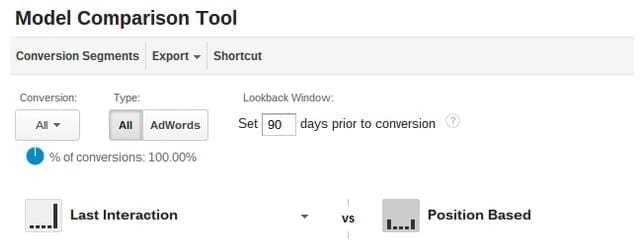According to 2015 CMO.com Stats about Marketing ROI, 93% of CMOs say that they are under more pressure to deliver measurable return-on-investment (ROI). Google Analytic defines “attribution modeling” as “the rule or set of rules that determines how credit for sales and conversions is assigned to touch-points or any point of contact between a buyer and a seller in conversion paths” (i.e. lead generation or sales process). Are you using attribution modeling to measure ROI or return on advertising spend (ROAS)?
Measure Marketing ROI and ROAS with Attribution Modeling
In general, most web analytics tools (Google Analytics, Adobe Analytics, comScore, WebTrends, etc.) associate the last point of contact, whether it be search, email marketing, social media, or ad that referred the customer with all the credit for the lead or sale. If paid advertising was the initial marketing channel in the lead generation process, but the potential customer didn’t fill out the online form until later via non-paid search (SEO), shouldn’t this count for something?

Understand Metrics, Act on Insights and Make Recommendations with Attribution
Can marketing executives really make better decisions without understanding the metrics that are associated with reporting? Attribution modeling provides marketing executives with a tool to compare different attribution models, understand their impact on lead/sales and the cost per lead/sale, and identify marketing channels that lead to higher ROI/ROAS. For example, take a look at the ROAS for last interaction vs. position based attribution modeling with Google Analytics:

Why Should Marketing Executives care about Attribution Modeling?
As marketers, we know that a lead or sale is based upon multiple points of contact with a brand. So, why should we continue to only allocate credit to the last interaction? Let’s take the Google Analytics scenario above for example. Take a look at the image above, the ROAS for paid search was 232% for the last point of contact (last interaction). If you use the position based model, this would have been an ROAS of 314.77% which is 82.47% than the last point of contact. This could be the difference between continuously running paid search and reallocating your budget elsewhere. By doing this more than once, it can create the perception of paid search marketing as an expense versus revenue generator.
Take Action with Multi-channel Attribution Modeling
The pressure is on marketers to measure ROI and to tell the story through data so here are our recommendations to get you started. First, identify the value of a lead or a sale and get confirmation from the executive team. Without a value, it’s going to be impossible to calculate ROI or ROAS. Then, identify an attribution model that best fits your business, test it and compare the metrics to put it into context. Finally, align your chosen attribution modeling with your insights, recommendations, and actions. Remember, attribution model isn’t perfect and technology continues to evolve, so continuously evaluate your chosen attribution model with the actual leads and sales your business is getting.
Leave us a comment below to share your thoughts or your experience with attribution modeling.

Leave a Reply